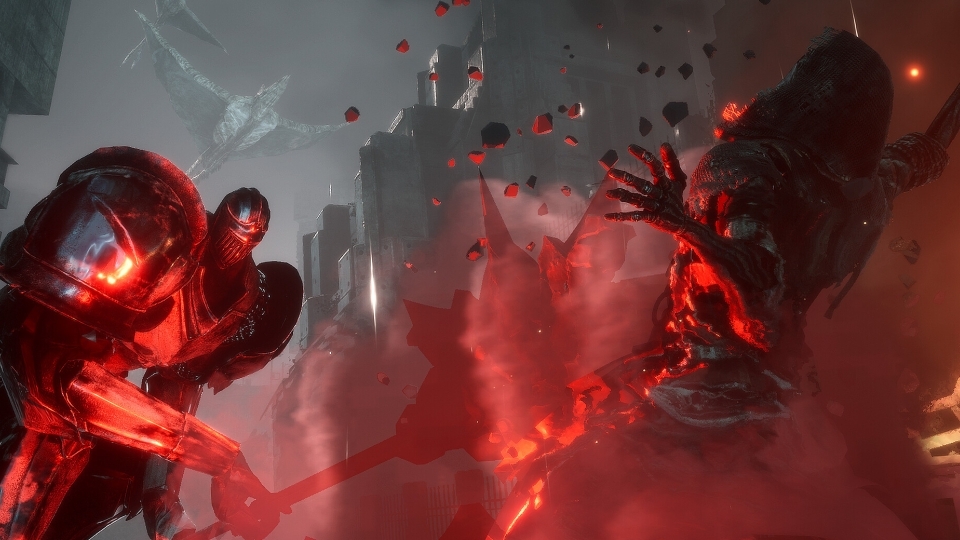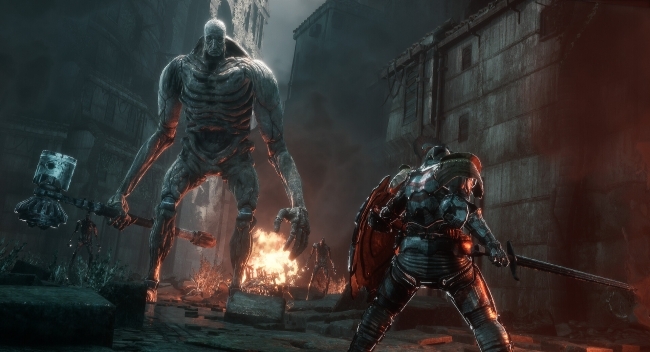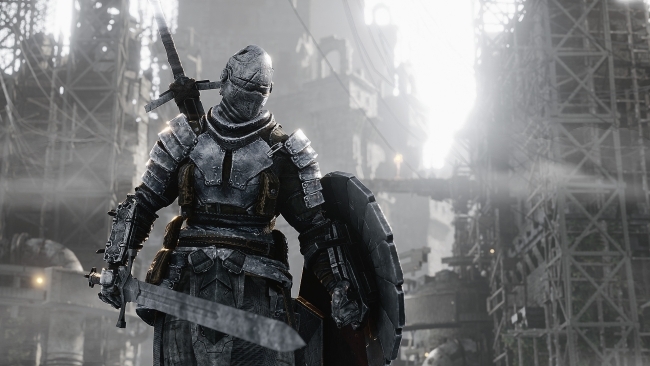‘Bleak Faith: Forsaken’ Changes the Game for Developer Mišo Vukčević ’18
September 20, 2023
- Author
- Caroline Roy ’20

Bleak Faith: Forsaken, a third-person open world survival horror action RPG, pits gamers against the monsters that populate the post-apocalyptic Omnistructure.
Mišo Vukčević ’18 works best when faced with a project that requires painstaking attention to detail and a deep reservoir of self-motivation.
When he first set out to build his own video game, he knew almost nothing about coding, digital art or game development. Now, he leads the three-person studio that produced Bleak Faith: Forsaken, a horror, action role playing game (RPG) that has taken off online since its release in March.
He got his start in a Davidson College classroom.
Born and raised in Montenegro and later Cyprus, Vukčević came to Davidson as an Alvarez Scholar and quickly found his strongest interests fell a bit outside the liberal arts curriculum. He wanted to follow in the footsteps of his older brother, Rade, and study architecture, so he took art and economics classes in order to land a summer internship.
Looking back on this time, Vukčević describes himself as a “bad student” who struggled to find the motivation to complete his assignments. The energy he lacked for coursework he poured into his own creative projects, which included writing and illustrating a comic book that would eventually inspire the story of Bleak Faith.
Christopher Nolan’s film Interstellar, with its moving storytelling, visuals and score, provided early inspiration for the game.
“I remember feeling like drawings were not going to cut it,” Vukčević said. “I needed to change mediums. I wanted to create that feeling for other people.”
In Prof. Mark Sample’s digital narratives course, Vukčević veered from his architecture dreams and ventured into the uncharted waters of game development. For their final project, students built their own two-dimensional games inspired by the examples they’d studied that semester. Vukčević asked for Sample’s permission to build a 3D game instead. It would take many more hours of work and require software that neither of them knew how to use, but Sample agreed.
He taught himself the basics of 3D game design, dedicated hours to creating the smallest details, even recording the game’s soundtrack with the help of his roommate, Andrew Ayala ’18.
The following year, he approached Art Professor Cort Savage with an idea for a year-long independent study project where he would develop a playable video game from scratch. Despite knowing little about game design, Savage gave him free rein to dive into the project. After months of exacting work, Vukčević had completed a 20-minute playthrough clip.
“It ended up being a really profound, artistic experience for me,” he said. “It almost felt like performance art meets digital art, because my audience was just one person. All of that work went into creating one single moment that no one ever saw again.”
Do or Die
Though he still hadn’t created a playable game, Vukčević had fallen in love with the process. He held on to this passion after graduating, using his limited free time to teach himself how to code and practice ZBrush, a digital sculpting tool he describes as “the opposite of intuitive” to learn.
At the time, he worked as a political canvasser and part-time gym teacher in Philadelphia. He’d often get home from work around midnight, spend a few hours working on the game, get a few hours of sleep and do it all again in the morning. His post-graduation years were defined by uncertainty—he was running out of time and money to make the game work, and he wasn’t sure if he’d be able to get the visa he needed to stay in the U.S. long term.
One day, his brother texted him with a proposition. He’d met someone from Montenegro, Mirko Stanić, who wanted to make games and was interested in working with Vukčević. The two connected online and quickly realized they possessed complementary skill sets. Stanić, an experienced programmer, needed an artist, while Vukčević needed someone who could handle the coding, giving him more time to focus on the visuals and overall gameplay.
Still, Vukčević hesitated to bring another person into what had been a solo endeavor for so long. It was now or never for Bleak Faith; they’d have to fully devote themselves to the project, knowing it could still fail.
“Until the game was released, I didn’t know if it would be possible,” Vukčević said. “It was a huge risk to put all my eggs in one basket, but I found the confidence to do it anyway. My mentality was that if it didn’t work out, I’d just make more eggs.”
The duo launched a Kickstarter campaign in the summer of 2019, complete with a trailer giving their audience a glimpse of the game’s open-world setting. To fully achieve the effect, Vukčević used his savings to purchase a motion-capture suit and appear in cutscenes himself. The project had reached a breaking point, and, as Vukčević puts it, “It was do or die.”
Mišo and his business partner, Mirko Stanić, are interviewed about their work on Montenegrin TV.
Family Influence
Since the game still needed a soundtrack, he reached out to his brother, who’s also a musician, to compose the score. It didn’t take long to realize Rade had more to offer than just music; his architecture background meant he could expedite the process of building 3D models of characters and buildings.
“He understood my vision better than anyone,” Vukčević said, “but he still brought his own flavor and understanding to the project.”
When he felt overwhelmed by the scale of the project, Vukčević turned inward, drawing on his experience as an immigrant and a Montenegrin to shape the unique world of Bleak Faith. The inspiration for the game’s urban landscape, for example, came from buildings Vukčević and his brother remembered from their hometown.
“Most people playing the game will have never seen this building anywhere else because it's the one I saw walking to school,” Vukčević said. “Doing that across the board, you're left with an environment that feels very organic.”



The brothers also took on voice acting for various characters, a skill that came naturally in part because of the number of different accents they were exposed to growing up. The myriad voices speaking broken English gives their (predominantly American) players the feeling of stepping into an unfamiliar world where they are the outsiders.
Prepare to Launch
Once the game was ready to be launched, the team found self-publishing to be far more difficult than expected. Developers usually hire an external team to publish and market their games but, working on their own, they had to rely on going viral. Luckily, word had spread online, and their audience began to grow.
Fast forward to today, and they’ve made enough money to fund the next three years of game development.
Vukčević no longer has to worry about making it as a game developer, only about improving his product. Within the next year, he and his team will re-release the game for console and continue to update the experience for their players.
“We’ve become so much more capable over time, but there’s still room for us to work smarter and optimize our process,” he said. “We want to show people that we’re not here for the money; we’re here to keep making the very best project we can, despite our unconventional development story.”
He’s proven that what once seemed like an impossible project can become possible with relentless dedication, immense effort and no small amount of faith.
“Bleak Faith is about believing in something when you’re not sure it exists,” Vukčević said. “It ties into the scariness of helming a project like this, the uncertainty of whether or not it would work out.”
Despite his unconventional path to becoming a video game creator, Vukčević wouldn’t change a thing. Now that he’s become a pioneer in his own right, he wants to help others make it in the competitive world of game development. Even—and especially—the ones who are looking for ways to chart their own paths, just as he did at Davidson.



